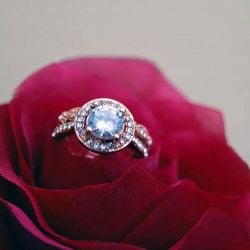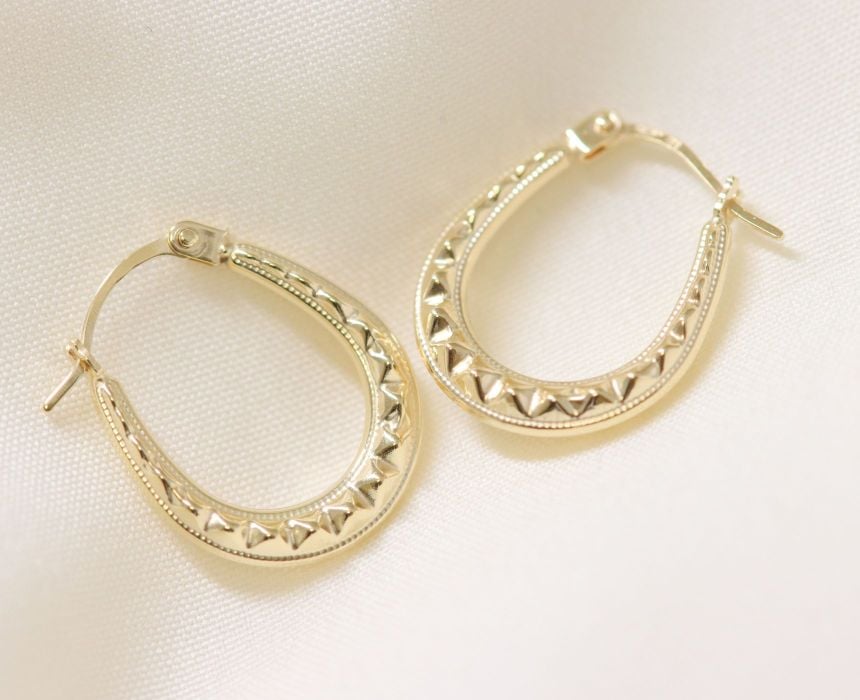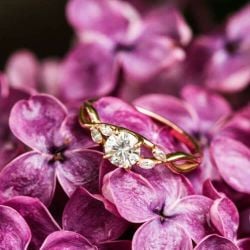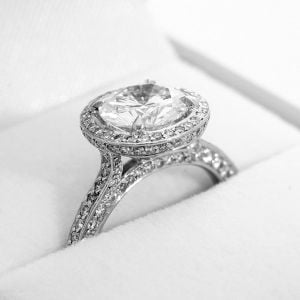- ‹Home
- ‹
- /
- Jewellery & Watch Guides
- /
- Watch Size Guide

Watch Size Guide
There is a lot to think about when choosing a watch. It’s not just the strap size you need to consider, but also the size and shape of the case, the strap material, and the details. All of this can affect how a watch looks on your wrist. Not to worry! This watch size guide will go through everything you need to know when choosing a watch for your wrist, and how to measure up to choose your perfect watch.All Watches

Watch Sizes
As humans, we are naturally drawn to balance, and this concept is just as important when choosing a watch. That’s why it’s important not to just look at the strap size, but how the case and details affect how the watch looks and how it sits on your wrist.
Here are all the things you need to think about when choosing a watch:
Watch Cases
Watch cases are the part of the watch that holds the watch face. This area of the watch demands attention and draws the eye. When choosing a watch you need to take into considera-tion the shape, diameter and thickness of the case.
Watch Case Shapes
Watch cases tend to be either round (which is the most common) or square, and can have a full face or smaller dial. Watch cases of the same size but different shapes will look different on the wrist. This is because of geometry and design elements. For instance, a square case has more “square footage” due to its geometry, which means it looks bigger on the wrist. On the other hand, a smaller dial will make a watch look smaller.
Watch Case Details
It’s not just this that will cause a watch to look bigger or smaller, but all the details on the face. Things like the type and size of hour markers, hands, lugs (where the straps go) and the crown will all affect how big a watch looks on your wrist.
Usually, slimmer wrists look better with minimal features, whereas those with larger wrists tend to suit more dominant features on the watch case. As details get bigger, the watch case will also look larger, which can also affect how a watch looks on a wrist.

Watch Case Diameter
The diameter of a watch case is measured in millimetres (mm), a special instrument called a calliper is used to do this. Watches cases tend to fall between 29mm and 48mm in diameter. When choosing a watch, think about the diameter of the case and how it will appear on your wrist. To do this, measure your wrist (we’ll go through this in more detail later). If your wrist is smaller, go for a smaller case, larger go for a larger case. For something flashy that you want to stand out more, go slightly larger than recommended for your wrist size.
Women's watches tend to be under 38mm in diameter, men’s watches are usually above 38mm. Though it does depend on your wrist size and personal preference.
Watch Case Thickness
Watch case thickness is measured from the top centre of the watch face to the middle of the back of the case, using a calliper. Watch cases range from ultra-thin (6mm) to bulky (10mm). The more complicated the watch, the thicker the case needs to be to accommodate all the mechanisms.
The thickness of the watch case should also be in proportion to the diameter, so the bigger the diameter, the thicker the case. For balance, a diameter of 38mm to 42mm should have a 7mm thickness.

Watch Straps
Watch straps affect how the watch and watch case looks on your wrist. If you like a watch case that looks a little big or small on your wrist, the strap can balance this out. It’s important to look at both the thickness of a watch strap and the material used.
Watch Strap Thickness
You can usually find bands between 10mm and 32mm thick. The most well-proportioned and balanced watches feature a watch strap that has a thickness of half the case diameter. Therefore, a 38mm watch should have a watch strap that is 16mm thick.
However, don’t take this as a must, as it depends on personal preference too, some watches have thinner bands, some have thicker.
Watch Strap Material
The material of a watch strap will affect how big the watch looks on the wrist, and how the watch case looks in proportion. A metal band or bracelet tend to appear chunkier on the wrist than a leather or fabric strap. Because of this, metal straps tend to look better on thicker wrists, though you can find thinner metal straps nowadays.
Generally, a metal strap will appear bold and flashy, whilst a leather or fabric band can be slimming and gives a classic look.
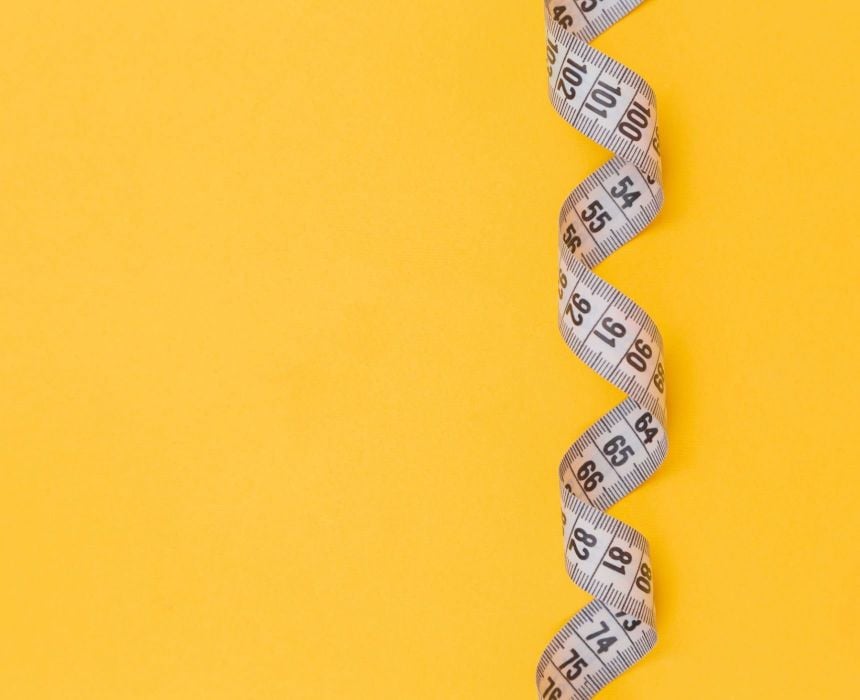
Your Wrist Size
When choosing a watch, knowing your wrist size is a good starting point. Knowing the size of your wrist will give you an idea of what case size and band size will look right on your wrist. From this starting point, you can fiddle around with sizes, shapes and materials to see how they look and feel on your wrist.
How to Measure Your Wrist
Measuring your wrist for a watch is easily done. Just follow these simple steps:
- Take a flexible measuring tape or a strip of paper;
- Wrap the tape or paper around your arm just below the wrist bone, this is where a watch would normally sit;
- if you are using a tape measure, simply make a note of where the end meets itself, this is your wrist size and you can ignore the below point; if you are using a strip of paper, take a pen and make a mark where the end of the paper meets itself (it is also helpful to mark the end that you placed against your wrist);
- Unwrap the paper (if this is what you have used), and lie it flat next to a ruler or stiff tape measure;
- Note the measurement between the end of the paper that was against your wrist and the mark you made, this is your wrist size.

The average women’s wrist size is 6.5 inches, and the average men’s wrist is 7.5 inches. But, there is a range of sizes, which is affected by age, health and lifestyle (which affects muscle and fat):
Wrist Sizes:
Wrist Size |
Measurement (CM) |
Measurement (Inches) |
Very Thin |
13-16 |
5.0-6.3 |
Slender |
16-17 |
6.3-6.7 |
Medium |
17-18 |
6.7-7.1 |
Thick |
18+ |
7.1+ |

Choosing the Right Watch for Your Wrist
Once you have the size of your wrist, you can easily see what watch size would be best for you. Use this as a starting point, as you also have to think about your personal preference and comfort. In general, these are the sizes you want for wrist sizes:
| Wrist Size | Watch Case Diameter | Watch Case Thickness | Strap Thickness |
| 13cm (5 inches) | 29mm - 32mm | Below 10mm | 14.5mm - 16mm |
| 14cm (5.5 inches) | 32mm - 34mm | 10mm - 12mm | 16mm - 17mm |
| 15cm (6 inches) | 34mm - 36mm | 12mm | 17mm - 18mm |
| 16.5cm (6.5 inches) | 36mm - 38mm | 12mm | 18mm - 19mm |
| 17.5cm (7 inches) | 39mm - 42mm | 12mm | 19.5mm - 21mm |
| 19cm (7.5 inches) | 43mm - 46mm | 14mm | 21.5mm - 23mm |
| 20cm (8 inches) + | 47mm + | 15mm + | 23.5mm + |
Use the above table as a guide for your starting point when choosing a watch. Then either go in-store to try on some watches, or you can use our Printable Watch Size Guide to have a play with what would look best on your wrist.

Tips for Choosing Your Watch
Remember, it’s not just the size of the case and strap that will affect the way a watch looks on your wrist. Here are some additional tips based on your wrist size:
Tips for Very Thin Wrists
If you have a very thin wrist (between 13 and 16cm) you want to go for smaller straps and cases in both thickness and diameter. Anything that is bulky could overwhelm your wrist and look awkward. Choose small details too, such as thinner hands, smaller numbers, and delicate buckles, as well as opting for a fabric or leather strap so that it looks thinner. For this look at “dress” watches which will complement your wrist size.
Tips for Slender Wrists
Slender wrists (between 16 and 17cm), a slim watch is also advisable. If you are worried about thinner watches looking too dainty on your wrist, choose a thin case with an average di-ameter to bring balance, for instance, a case that’s 38mm in diameter with a thickness below 8mm won’t look too delicate on a slender wrist. Slim watches look best with thin straps in fabric or leather. Also, choose a watch case that is more minimal in design.
Tips for Medium Wrists
A medium wrist (17 – 18cm) has a lot more flexibility when it comes to watches. Though you’ll still have to see what looks best for you. Try to avoid going too big or small, a watch case diameter of about 40mm is a good choice here. A medium wrist has more flexibility with the design of the watch, try minimal and busy designs to see which you prefer.
Tips for Thick Wrists
Thicker wrists (above 18cm) should opt for bigger watches, a small watch will look lost on your wrist. But you still need to find the right balance. Sports watches are often a good choice for thicker wrists but don’t feel restricted to these. You should also stick away from minimal designs, as these can make the dial look sparse and empty.
Whatever the size of your wrist, use the above as a guide and remember to also consider your style, preference and comfort when choosing a watch. If you’re ready to choose using our watch size guide, check out our current range of watches. We stock a wide range of luxury brands including Rolex watches and iconic Omega watches with both new and pre-owned watch models available. If you’re after a classic timepiece, be sure to browse our vintage watch range too.
RAMSDENS RECOMMENDS





